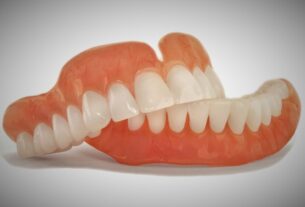Global Medical 3D Printing market pegged at $1.5-2 billion (2020) growing at lucrative rate of 15-20%. The medical 3D printing market growth would be driven by patient specific 3D printed implants and growing adoption of POC in in 3D printing. To learn more about the research, fill out a quick inquiry for a sample report.
Medical device 3D printing market is poised to revolutionize the healthcare industry. It is being increasingly used in medical and dental market for prototyping; producing anatomic models for surgical planning; making surgical guides; and manufacture of implants, instruments and prosthetics. Growing preference for medical device 3D printing over traditional machining methods owing to advantages such as less wastage of materials, cost effectiveness for smaller batches/more complex shapes and better clinical outcomes is driving the medical device 3D printing market growth. Moreover, the rising aging population, steady growth in orthopaedic and dental procedures, and improving reimbursement scenario are other important factors driving the medical 3D printing market growth. In terms of opportunities, underpenetrated applications such as regenerative medicine and point of care 3D printing are likely to be the high growth areas of the medical device 3D printing market in the coming years.
Medi-Tech Insights’ research on medical device 3D printing market analyses it with respect to product, application, technology, end user, and region
Based on our research & interviews with industry experts, it is evident that surgical planning & patient specific implants are the major applications today while US is largest geographic market with China emerging very quickly as a large medical 3D printing market.
Improving reimbursement scenario would drive the adoption of medical 3D printing
Governments (especially in developed countries) are taking steps to incentivise use of medical 3D printing. For instance, in 2019, in the U.S., Category III CPT billing codes were introduced for 3D printing. These codes were introduced for surgical planning solutions such as anatomic models and for 3D-printed anatomic guides. In the first phase, the codes would not essentially guarantee the reimbursement. However, it will serve to collect necessary data to decide on future policies for reimbursement.
“Orthopaedic and CMF surgeons are increasingly adopting surgical planning and associated tools made using 3D printing, as they understand the positive impact of patient specific solutions/products on clinical outcomes”- CEO, Leading Medical 3D Printing Company
Medical device 3D printing market offers high growth opportunities for leading as well as new players
In terms of competitive landscape, 3D Systems, Stratasys, Materialise Medical, EOS 3D, Arcam, SLM Solutions, and Concept Laser are some of the leading players in the medical device 3D printing market. On the other hand, Orchestrate 3D, Tiertime 3D, T&R BioFab, Anatomics, LIMA, Biomodel, and PVA Med are some emerging players in medical device 3D printing market. The report provides detailed analysis of key players with respect to business and financial overview, key growth strategies, and developments.
Medi-Tech Insights’ research comprehensively analyses key areas such as investment trends and pricing intelligence in medical device 3D printing market
Benefits aside, 3D printing’s high initial cost and lack of reimbursement have been restraining the medical device 3D printing market growth to some extent. Commercial printers usually range from $10,000 to $500,000. Further, there is cost associated with fixed annual fees for segmentation software, lab space, resource cost and so on. Drawn by the huge promise to disrupt healthcare, many VCs/Investors have backed companies in medical device 3D printing market. For example Lightforce Orthodontics, which enables orthodontists to use 3D printing to make custom braces for patients, raised $14 million in Series B funding in September 2020. Similarly, Aspect Biosystems, a developer of microfluidic 3D bioprinting for human tissue-based therapeutics, raised $20 million in a Series A round in January 2020.
See More Related Insights



